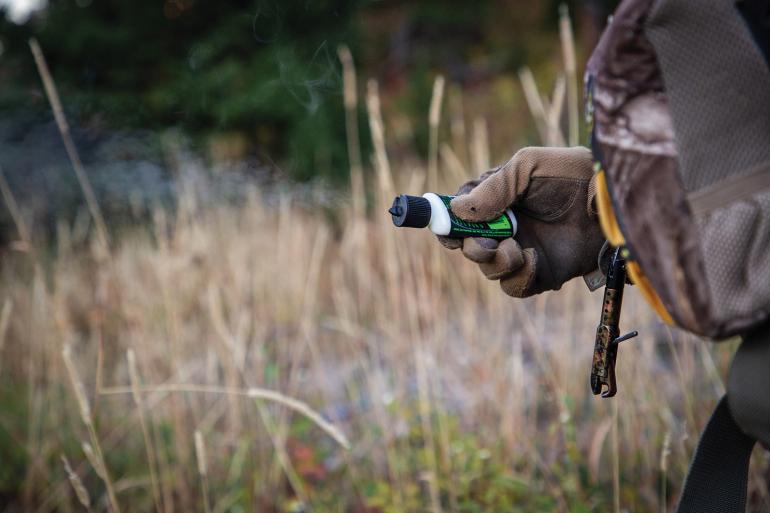Beyond the Basics
Second-tier hunting knowledge.
One of hunting’s greatest challenges is being aware of all the subtle variables at play. Conditions and elements are constantly fluctuating from one trip to the next. No two outings are the same. Over time, learning what nuances to expect will become intuitive. For now, here’s some general advice to keep in mind every time you go afield.
Know Your Wind
This is true for every hunt, no matter the species. Mind the direction it’s coming from and pursue the animal downwind of it. If there isn’t an established breeze, pay attention to thermals. Hot air rises, so if the temperature is warming up (e.g., in the morning), predominant currents will take your scent upslope. Conversely, if temps are dropping, air pockets will move downward. If you’re setting up for waterfowl, place your blind so that birds will be coming into the set with the wind at their face, slowing them down and thus presenting an easier shot.
Locate Food & Water
Every animal needs to eat and drink (weird, eh?). While some ungulates can go a couple days without food or water, most feed and drink at least once a day. Look at your desired area and figure out what the primary habitat is and which spots hold the most abundant nutrition. Animals develop rough feeding patterns depending on weather, time of day, and hunting pressure. As a rule of thumb, activity peaks early in the morning and later in the evening. Set yourself up in good glassing positions during these times. A good highpoint will grant you a view of multiple spots.
Cool the Meat
The hotter it is, the more critical this becomes. As soon as you get an animal down, that meat is prone to spoilage. If it’s warm, or you’re more than a mile from the truck, quarter the animal, wrap the quarters and trim in game bags, and hang the bags in a tree. Look for branches that will allow maximum airflow. The air temp—both day and night—should determine your sense of urgency. If it’s freezing overnight, you don’t need to be as stressed (but never lollygag); however, on a warm September evening, you need to get that meat out stat. For archery hunters, this can be a serious chore, and many find themselves packing through the night. When hunting in hot weather, it’s helpful to have a large cooler with ice waiting in the truck to put the quarters in (and some caffeine or other stimulant to help with successive trips). Hanging quarters near a cold alpine stream can help prevent spoilage as well.
Be Flexible
Leaving the truck with one idea in your head is preparation for failure. Have game plans A, B, and C, and be ready to roll with any of them. Ask yourself questions like: what if the buck isn’t where I saw him feeding last night? What if there’s another hunter at the trailhead? What if the road is snowed in and I can’t reach my waypoint? Not every hunt goes to plan—most rarely do! Instead of getting upset at unforeseen circumstances, cross that bridge ahead of time and give yourself multiple outs for whatever you might get into.
Communicate with Others
Yeah, yeah, we all hate to find three rigs at the spot we planned to hunt. While you might be bitter about running across other people, that’s the way it is these days. Unless you plan to leave the area entirely, it’s to both parties’ advantage to talk with one another and coordinate approaches. State honestly what your plan A was and listen to your fellow hunter’s. Most folks are reasonable, and finding a solution that works for everyone can be done. You may not get to immediately go after the bull you spotted the day before, but it sure beats a foot race that ends in rage. No one wins in those situations.
Respect the Tradition
Hunting is a game of life and death. It deserves to be taken seriously. Honor the animal with every decision and treat the space with equal appreciation. Public lands offer us a unique and special opportunity to explore and chase wild game. Do so indulgently, but respect wishes of private landowners, especially if they’ve given you permission to hunt. Remember, the ultimate goal should have nothing to do with how big the rack is or how far the shot was. The true meaning lies in the pursuit itself.












